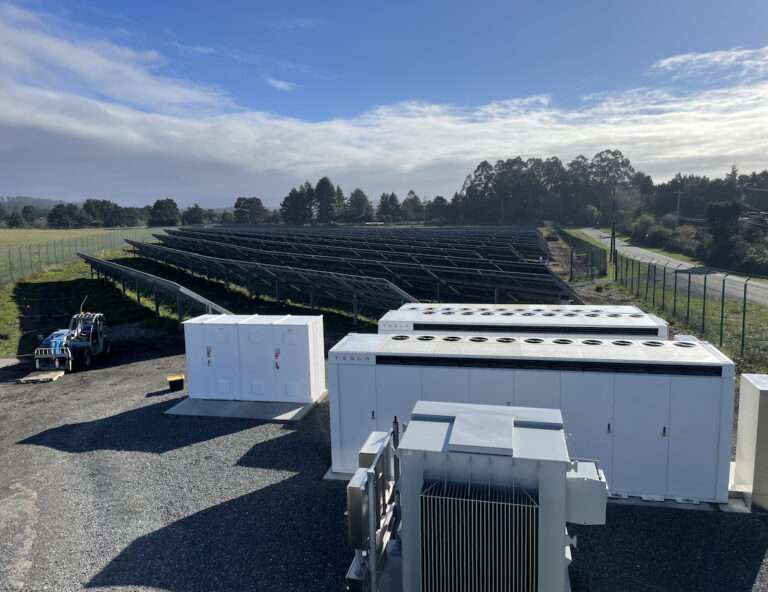
A front-of-meter microgrid combining 2.2MW of solar PV with a 9MWh battery has gone online in Humboldt County, northeast California, which its developers claim is the first of its kind.
The Redwood Coast Airport Microgrid (RCAM) is the first 100% renewable energy, front-of-meter, multi-customer microgrid to go online in the state, the press release said.
With the aid of a 2MW/9MWh battery energy storage system (BESS) made up of Tesla Megapacks, it will provide energy resilience for 19 customer groups including the California Redwood Coast-Humboldt County Airport and US Coast Guard Air Station.
The Schatz Energy Research Center is the prime contractor and technology integrator, leading the design, testing and deployment of the microgrid. The owner of the BESS and solar PV is Redwood Coast Energy Authority (RCEA), a local Community Choice Aggregator (CCA), a type of non-profit utility.
Try Premium for just $1
- Full premium access for the first month at only $1
- Converts to an annual rate after 30 days unless cancelled
- Cancel anytime during the trial period
Premium Benefits
- Expert industry analysis and interviews
- Digital access to PV Tech Power journal
- Exclusive event discounts
Or get the full Premium subscription right away
Or continue reading this article for free
RCAM will provide energy for the North Coast area through participation in the California Independent System Operator’s (CAISO) wholesale energy markets and ancillary services markets.
It has a built-in ‘islanding’ mode capability, meaning during times of a broader grid outage it can disconnect from the grid and continue providing power for the 19 connected customers, ensuring the flight and rescue services can continue. PG&E owns, operates and maintains the microgrid circuit and controls the system during island mode.
This is particularly significant because roads into Humboldt County are often closed by fires and mudslides meaning air services are particularly critical in emergency response. The airport handles 50,000 flights a year while the Air Station provides search and rescue services for 250 miles of coastline, nearly a third of all of California’s coastline.
The microgrid is the first project in a programme by PG&E to help communities at heightened risk of losing their electricity supply during disasters develop their own microgrid solutions, which was previously reported on by Energy-Storage.news.
The Community Microgrid Enablement Program (CMEP) offers assistance for the design and deployment of microgrids which can be islanded and operated independently of the main grid operated by PG&E.
The RCAM microgrid’s development was supported through California’s Electric Program Investment Charge (EPIC), a state-wide customer-funded program that enables PG&E and other investor-owned utilities in the state to execute emerging technology demonstration and deployment projects that address important grid needs.





